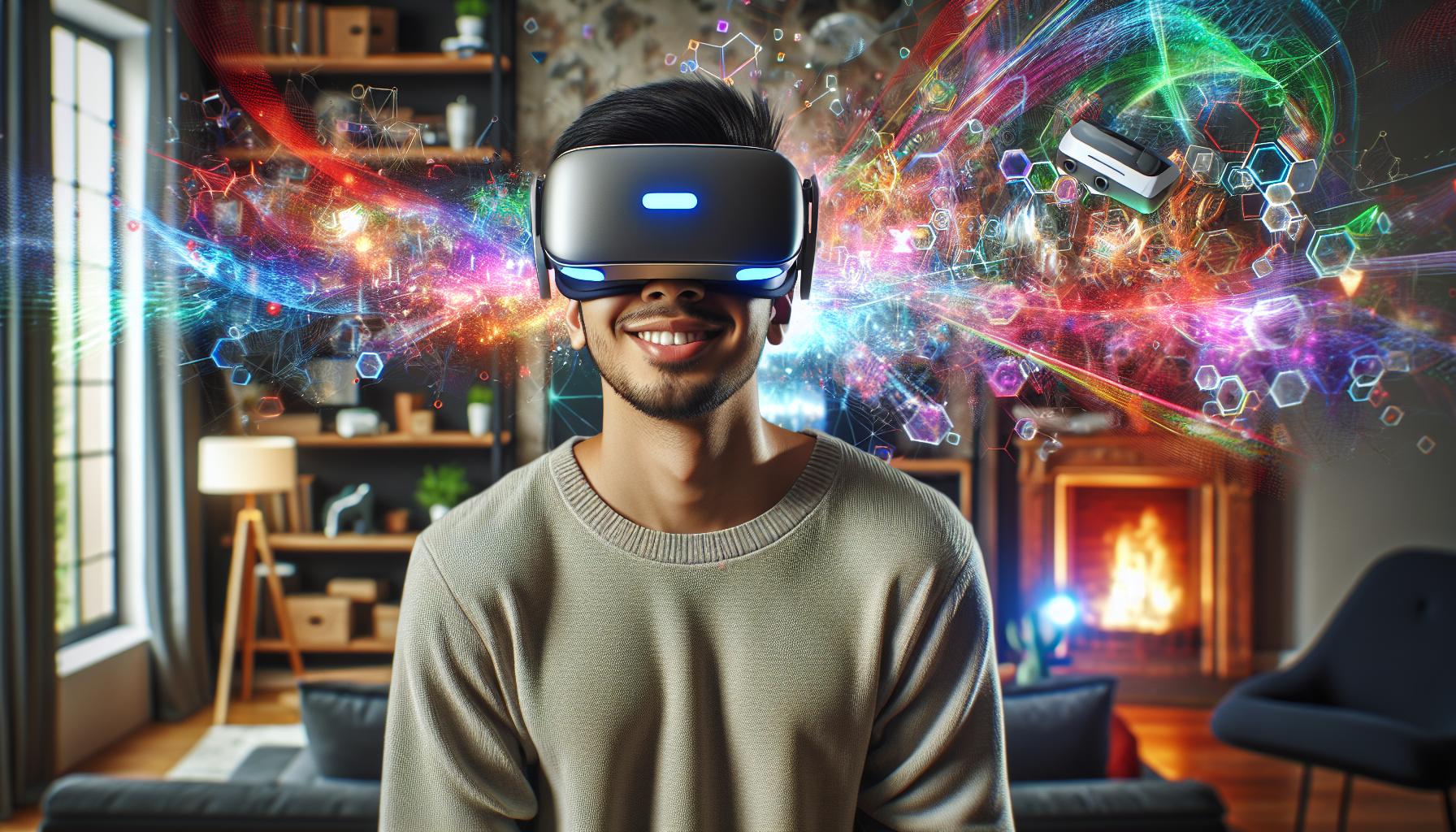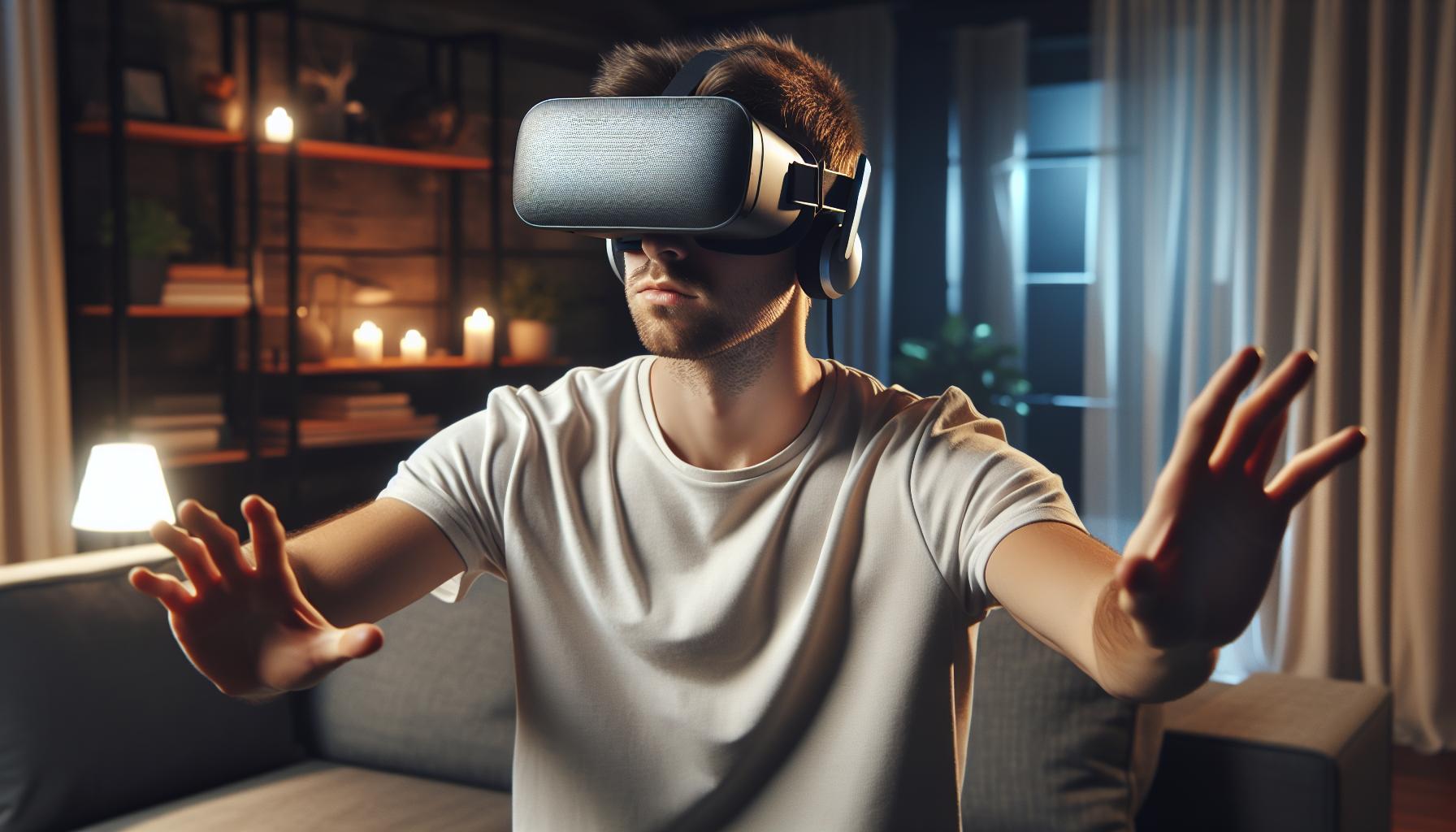Key Takeaways
- Immersive Experiences: Oculus Virtual Reality transforms user experiences through high-resolution visuals, advanced motion tracking, and spatial audio, creating captivating virtual environments.
- Diverse Applications: Beyond gaming, Oculus VR supports educational tools and social interactions, broadening its usage across various fields like education and virtual meetings.
- User-Centric Design: Each headset prioritizes comfort and usability with ergonomic designs, customizable controls, and intuitive interfaces, catering to both beginners and experienced users.
- Continuous Innovation: Oculus consistently evolves its technology, offering regular updates and new content, ensuring users have access to the latest virtual experiences.
- Robust Software Ecosystem: The platform features a versatile library of applications, including popular games and unique educational tools, enhancing engagement and interactivity.
- Future Potential: Upcoming advancements in technology and expanded content aim to enhance user engagement, foster community, and drive cross-industry applications, positioning Oculus as a leader in the VR market.
Oculus Virtual Reality has revolutionized the way people experience digital environments, immersing them in worlds previously thought to be the stuff of science fiction. With its cutting-edge technology and user-friendly design, Oculus has opened the door to endless possibilities in gaming, education, and social interaction.
As virtual reality continues to evolve, it’s not just about entertainment; it’s about creating new ways to connect, learn, and explore. From breathtaking landscapes to thrilling adventures, Oculus offers users an unparalleled escape from reality, making it a game-changer in the tech industry. Discover how this innovative platform is shaping the future of virtual experiences and what it means for users worldwide.
Oculus Virtual Reality
Oculus Virtual Reality encompasses a range of headsets and software designed to immerse users in virtual environments. The Oculus Quest and Oculus Rift series serve as primary devices, offering wireless and wired options. Each headset integrates high-resolution displays, advanced motion tracking, and spatial audio for an immersive experience.
Oculus combines hardware innovations with diverse software offerings. Popular applications include gaming, educational experiences, and virtual social interactions. Users can explore expansive virtual worlds, participate in multiplayer games, or engage in virtual meetings.
Oculus leverages cutting-edge technology, such as the Snapdragon processor in standalone devices. This technology enhances performance, reducing latency and improving graphics. Additionally, Oculus supports cross-platform compatibility, allowing users access to a wider array of experiences.
The user experience is central to Oculus design. Customizable controls, intuitive interfaces, and ergonomic designs enhance comfort and usability. Oculus prioritizes accessibility, accommodating varying levels of expertise among users, from beginners to seasoned VR enthusiasts.
Through its commitment to innovation, Oculus continually expands its ecosystem. Frequent updates enhance existing features and introduce new content. This ongoing development solidifies Oculus’s position as a leader in the virtual reality market.
Key Features of Oculus Devices

Oculus devices combine advanced technology and user-centric design, offering exceptional features that enhance virtual reality experiences. The following sections break down the key hardware specifications and software capabilities integral to Oculus headsets.
Hardware Specifications
Oculus devices feature powerful hardware components, ensuring immersive performance across various applications. Key specifications include:
- Resolution: Oculus headsets, like the Quest 2, boast a resolution of 1832 x 1920 pixels per eye, providing sharp, detailed visuals.
- Refresh Rate: Devices offer refresh rates of up to 120 Hz, ensuring smooth motion and reducing motion sickness.
- Tracking Technology: Inside-out tracking enables users to move freely without external sensors, using multiple cameras to track head and hand movements accurately.
- Audio System: Integrated spatial audio provides realistic soundscapes, enhancing the immersion by simulating 3D audio environments.
- Processor: The Qualcomm Snapdragon XR2 processor powers the Quest 2, enabling faster graphics rendering and improved performance in demanding applications.
Software Capabilities
Oculus headsets run on versatile software platforms that enhance user engagement and interactivity. Key software capabilities include:
- VR Applications: A wide range of gaming, social, and educational applications cater to diverse interests, with frequent updates expanding the library.
- Multiplayer Experiences: Users can engage in multiplayer gaming and virtual social interactions, connecting with others in immersive environments.
- Cross-Platform Compatibility: Oculus supports cross-platform play, allowing users to access experiences across various devices and enhance interaction.
- Customizable Interfaces: Intuitive user interfaces and customizable control settings make navigation and content access straightforward for all users, regardless of tech proficiency.
- Content Creation Tools: Oculus provides tools for developers to create and optimize VR applications, ensuring a continuous influx of innovative virtual experiences.
The robust hardware and versatile software capabilities of Oculus devices significantly elevate the virtual reality experience, marking them as leaders in the industry.
User Experience with Oculus Virtual Reality

User experience defines the engagement and satisfaction users find with Oculus Virtual Reality. This encompasses several elements, notably immersion, realism, comfort, and usability.
Immersion and Realism
Immersion and realism constitute key strengths of Oculus Virtual Reality. Users experience high-definition visuals with a resolution of 1832 x 1920 pixels per eye, enhancing the visual experience. Advanced motion tracking allows for precise movements in virtual environments, making interaction seamless and intuitive. Spatial audio creates an accurate sound field, helping users locate sounds as they would in real life. Developers create diverse worlds and scenarios, from interactive games to virtual social hangouts, providing users with a sense of presence that engages users on multiple sensory levels.
Comfort and Usability
Comfort and usability are essential factors in the Oculus user experience. Each headset is designed with ergonomics in mind, accommodating extended use without discomfort. Adjustable straps and balanced weight distribution minimize strain on users’ heads and necks. The intuitive interfaces simplify navigation, allowing users of any skill level to access content effortlessly. Furthermore, customizable controls cater to personal preferences, promoting a more personalized and enjoyable experience. These design choices ensure that Oculus devices aren’t just technologically advanced but also accessible and enjoyable for a broad audience.
Popular Oculus VR Titles

Oculus VR boasts a diverse range of titles across multiple categories, offering engaging experiences for users. Popular titles showcase the capabilities of Oculus headsets, emphasizing quality and innovation.
Gaming Experience
Oculus VR features numerous acclaimed games that leverage its advanced technology. Notable examples include:
- Beat Saber: A rhythm-based game where players slice through blocks in time with music. The game incorporates physical activity while enhancing hand-eye coordination.
- The Walking Dead: Saints & Sinners: A survival horror game set in the Walking Dead universe, where players navigate a post-apocalyptic world, making choices that impact the narrative.
- Moss: A unique action-adventure game featuring a small mouse named Quill as the protagonist. Players assist Quill in overcoming obstacles and solving puzzles in a beautifully rendered world.
- Population: One: A multiplayer battle royale game that allows players to climb, fly, and build in a fully immersive environment, promoting both strategy and teamwork.
These examples showcase how Oculus VR transforms gaming by delivering immersive experiences that engage multiple senses.
Educational Applications
Oculus VR redefines educational possibilities with immersive learning environments. Significant applications include:
- Wander: A virtual tourism app that lets users explore real-world locations, making geography and cultural studies more engaging and interactive.
- Tilt Brush: An innovative painting application that allows users to create 3D art in a virtual space. This tool enhances creativity and spatial understanding for art students and professionals.
- Engage: A platform for hosting virtual classes and conferences, enabling educators to conduct lessons in realistic settings and improving educational outreach.
- InMind: A scientific adventure game that demonstrates neuroscience principles by allowing players to journey inside the human brain, teaching players about various neural functions.
These educational applications emphasize the potential of Oculus VR in facilitating enhanced learning experiences through interactive simulations and engaging content.
Future of Oculus Virtual Reality
Oculus Virtual Reality continues to evolve, focusing on advancements in technology, applications, and user engagement. Expected innovations include enhanced processing power, improved graphics, and more immersive experiences. Developers constantly refine hardware and software, ensuring Oculus remains at the forefront of VR technology.
Upcoming Technologies
New hardware technologies aim to redefine user experiences. Potential advancements include:
- Higher Resolutions: Future headsets may feature resolutions exceeding 4K per eye, enhancing visual clarity.
- Advanced Tracking Systems: Innovations in eye-tracking and facial recognition may lead to more intuitive interactions.
- Wireless Capabilities: The push for completely wireless setups promises greater freedom of movement and comfort.
Expanded Content Ecosystem
An expanded content ecosystem supports diverse applications and experiences. Anticipated developments include:
- More VR Titles: An increase in AAA games and indie titles maintains an engaging library for users.
- Enhanced Educational Applications: Educational platforms, like virtual classrooms and simulations, continue to grow, offering interactive learning experiences.
- Social Experiences: Virtual social interactions will advance, promoting new ways for users to connect globally.
Community and Development Focus
Community engagement and developer support remain essential for Oculus’s growth. Initiatives may include:
- Improved Developer Tools: Enhanced software development kits (SDKs) encourage the creation of innovative VR applications.
- User Feedback Integration: Active listening to community feedback ensures software updates align with user needs.
- Collaborative Experiences: Development of applications that promote teamwork and social interactions builds a vibrant user community.
Market Trends
Market trends indicate a rising demand for VR solutions across various sectors. Observations include:
- Increased Investment: Continued interest from investors fuels new projects and technological advancements.
- Cross-Industry Applications: VR finds applications in healthcare, architecture, and training programs, broadening its appeal.
- Global Expansion: Growth in international markets enhances Oculus’s accessibility and user base.
The future holds significant promise for Oculus Virtual Reality, driven by technology, content, and community engagement.
A Catalyst For New Experiences
Oculus Virtual Reality stands at the forefront of a digital revolution. Its innovative technology and user-centric design are redefining how people engage with entertainment and education. With a commitment to continuous improvement and a growing ecosystem of applications, Oculus is not just a leader in VR but a catalyst for new experiences.
As advancements in hardware and software unfold, the potential for immersive interactions will only expand. Whether enhancing gaming or transforming learning environments, Oculus is poised to shape the future of virtual reality. Users can look forward to a world where the boundaries of reality blur, offering endless opportunities for exploration and connection.
